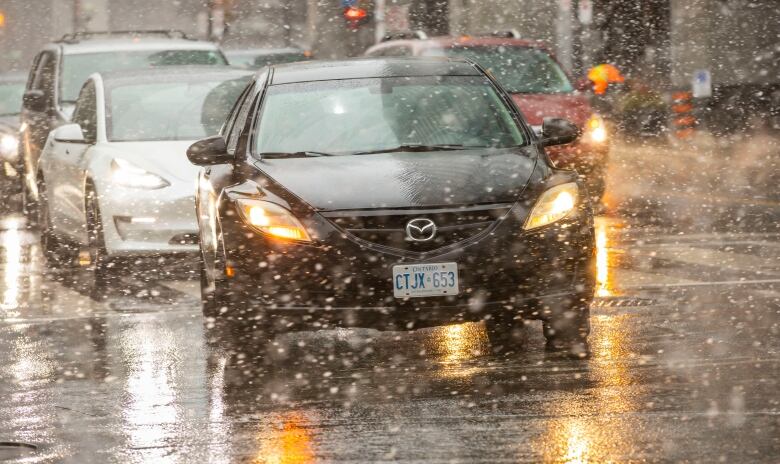Toronto just set December records for rain and fog, and the winter is expected to stay grey
A warmer than usual winter is to blame, says Environment and Climate Change Canada

After a gloomy December with record amounts of fog and rain, Torontonians suffering from seasonal depression shouldn't expect the sunlight to return any time soon this winter.
According to Environment and Climate Change Canada, rainfall was recorded on 15 days last month, compared to an average of sevendays for December. And mild temperatures it was five degrees warmer than the average Toronto December brought in more fog than usual.
Senior climatologist DavidPhillips says the city recorded more than200 hours of fog over 17 days last month. The city has never seen that much rain or fog in December, Phillips says.
"It's been more like what you'd expect in Vancouver, or maybe Halifax," he told CBC Toronto.
This winter, air hasn't been coming from the North, Phillips says, but from the Tropics, El Nio, and the Pacific and Atlantic Oceans. All that means more precipitation.
"At this time of the year, often the mild equates to cloud, overcast," he said. "The thing that was missing this year was the sun."
Phillips says the worst is likely over now, but the days likely won't be getting a whole lot brighter this winter. Drizzly, grey weather is expected to continue through January and February, though the sun should come out a little more often as the temperature keeps cooling, Phillips says.
Cloudy weather worse for seasonal depression
That could mean a tougher season for people struggling with seasonal affective disorder (SAD), says Dr. Robert Levitan, a professor of psychiatry at the University of Toronto, and the Cameron Parker Holcombe Wilson chair in depression studies at the Centre for Addiction and Mental Health.

Somewhere between one-third and one-half of Canadians report having less energy and lower spirits asthe winter days get darker, Levitan says, and five per cent struggle deeply with depression as a result. Wet, cloudy weather, more than snow and ice, contribute to the problem, he says.
"For some of my patients, even in the summer, if it suddenly gets very grey, unexpectedly, and there's a lack of light, they can feel some of the symptoms of SAD," Levitan said.
"Moment-to-moment changes in lightcan have a lot of effects in people who are susceptible to this."

The best solution, Levitan says, is brightening your days with artificial light. A SAD lamp is aneffective tool, he says, as the light needs to be extremely bright to make up for lost sun and UV-free so as not to damage the retina. The other key to using artificial light, Levitan says, is a schedule.
"You do need to use it regularly, at a very regular time and make it part of your regimen and that includes the weekend," he said.
"If you keep changing the timing of it, or if you stop using it, and then start again, it's just like jet lag. What you're doing is you're giving your brain different timing signals."












_(720p).jpg)


 OFFICIAL HD MUSIC VIDEO.jpg)
.jpg)



























































































